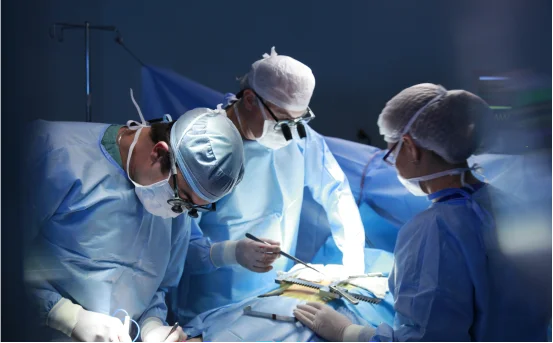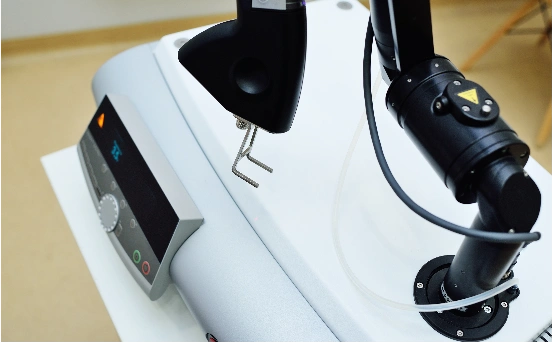Pancreatectomy is a surgical procedure to remove all or part of the pancreas, typically used to treat conditions such as pancreatic cancer, pancreatitis, or benign pancreatic tumors. Given the complexity of the pancreas and its role in digestion and insulin production, the type of pancreatectomy chosen depends on the disease, its location, and the overall health of the patient.
Pancreatectomy is not a one size fits all procedure. Depending on the specific disease, its location within the pancreas, and how far it has progressed, different surgical approaches may be used. Some procedures aim to remove only a small portion of the pancreas while preserving its function, while others involve removing the entire organ and nearby structures. Advancements in surgical techniques have also made minimally invasive pancreatectomy possible for selected patients, resulting in faster recovery and fewer complications.
What Is a Pancreatectomy?
A pancreatectomy involves the surgical removal of pancreatic tissue. This can be done partially or totally, depending on the medical condition being treated. Because the pancreas is closely associated with organs like the stomach, duodenum, spleen, and bile ducts, pancreatectomy can be complex and may involve removal or reconstruction of nearby structures.
Patients usually undergo this procedure for reasons such as pancreatic cancer, cystic neoplasms, neuroendocrine tumors, chronic pancreatitis, or traumatic injury.
Types of Pancreatectomy Surgery
Several different surgical techniques fall under the umbrella of pancreatectomy. The type of surgery performed largely depends on which portion of the pancreas is affected and how extensively the disease has spread.
Let’s break down the most common types of pancreatectomy surgery
-
Whipple Procedure (Pancreaticoduodenectomy) :- The Whipple procedure is the most common type of pancreatectomy, especially for tumors located in the head of the pancreas. In this complex surgery, the surgeon removes the head of the pancreas, a portion of the small intestine (duodenum), the gallbladder, and sometimes a portion of the stomach and bile duct.
After removal, the surgeon reconnects the remaining organs to ensure proper digestion. The Whipple procedure is often used to treat pancreatic cancer, ampullary cancer, and bile duct cancer. Though technically demanding, it can be life saving if the tumor is caught early.
-
Distal Pancreatectomy :- A distal pancreatectomy involves the removal of the body and tail of the pancreas, leaving the head intact. This surgery is typically used for tumors or cysts located in the distal portion of the pancreas.
In most cases, the spleen is also removed during this procedure due to its close proximity to the tail of the pancreas. Distal pancreatectomy is less complex than the Whipple procedure but is only suitable when the disease is confined to the pancreatic body or tail.
-
Total Pancreatectomy :- In a total pancreatectomy, the entire pancreas is removed, along with the gallbladder, common bile duct, part of the stomach and small intestine, and sometimes the spleen. This is usually done when cancer or disease affects the whole pancreas or when multiple tumors are found throughout the organ.
Because the pancreas plays a vital role in insulin production and digestion, patients undergoing total pancreatectomy will become diabetic and require lifelong insulin therapy and enzyme replacement. Although it’s a major life change, total pancreatectomy can be necessary for long-term survival in certain cancer cases.
-
Central Pancreatectomy :- A central pancreatectomy, also known as middle pancreatectomy, involves the removal of only the central part of the pancreas (usually the neck and part of the body), preserving both the head and tail. This procedure is usually performed for benign or low-grade malignant tumors located in the central portion of the pancreas.
Unlike the Whipple or distal procedures, central pancreatectomy aims to preserve as much healthy pancreatic tissue as possible, thereby maintaining better endocrine (insulin production) and exocrine (digestive enzyme) function. However, this procedure requires more complex reconstruction to maintain the continuity of the digestive tract.
-
Laparoscopic and Robotic Pancreatectomy :- In recent years, minimally invasive techniques like laparoscopic and robotic-assisted pancreatectomy have become increasingly popular. These methods can be used to perform distal or even total pancreatectomies in some cases.
The advantages of minimally invasive pancreatectomy include smaller incisions, less post-operative pain, shorter hospital stay, and quicker recovery time. However, not all patients are eligible, and the decision to use this approach depends on the surgeon’s expertise and the complexity of the condition.
How Is the Right Type of Pancreatectomy Chosen?
The decision on which type of pancreatectomy to perform is based on multiple factors, including
-
The location and size of the tumor or lesion
-
Whether the tumor is cancerous or benign
-
The presence of underlying conditions like pancreatitis or diabetes
-
The patient’s overall health and ability to tolerate surgery
-
The involvement of surrounding organs or blood vessels
A multidisciplinary team including surgical oncologists, gastroenterologists, endocrinologists, and radiologists typically collaborates to create the best treatment plan.
Recovery After Pancreatectomy
Recovery depends on the extent of the surgery and the patient’s health before surgery. Hospital stays can range from 5 to 14 days. Pain management, nutritional support, and monitoring for complications are crucial in the immediate post-operative period.
After discharge, patients are advised to eat small, frequent meals and may require pancreatic enzyme supplements to aid digestion. Those undergoing a total pancreatectomy will need lifelong insulin therapy due to the complete loss of insulin production.
Regular follow ups, including imaging and blood tests, are essential to monitor for recurrence in cancer patients or complications such as infections, leaks, or diabetes.
Risks and Complications
As with any major surgery, pancreatectomy carries certain risks. These include
-
Bleeding
-
Infection
-
Delayed gastric emptying
-
Pancreatic fistula (leakage of digestive juices)
-
New onset or worsened diabetes
-
Nutritional deficiencies
However, when performed at high-volume centers with experienced pancreatic surgeons, the outcomes are generally more favorable, and the risk of serious complications is reduced.
Conclusion
Pancreatectomy is a highly specialized surgery tailored to the location and severity of the pancreatic disease. From the intricate Whipple procedure to the organ-sparing central pancreatectomy, each type offers unique benefits and considerations.























